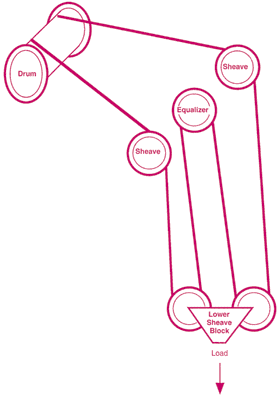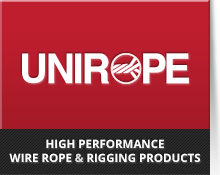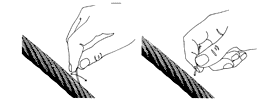GeneralIt is essential to maintain a well planned program of periodic inspections. In most cases there are statutory and/or regulatory agencies whose requirements must be adhered to. Whether or not such requirements exist in your specific environment, you can be guided by the suggested procedures that follows. Abrasion, Bending and Crushing represent the ABC‘s of wire rope abuse, and it is the primary goal of good inspection practice to discover such conditions with minimum effort. When any degradation indicates a loss of original rope strength, a decision must be made quickly to allow the rope to remain in service. Such a decision can only be made by an experienced inspector. His determination will be based on:
|
Broken WiresShortly after installation
During wire rope service (Fatigue Breaks) |
Areas to examine (Based on ISO 4309)
|
 |




